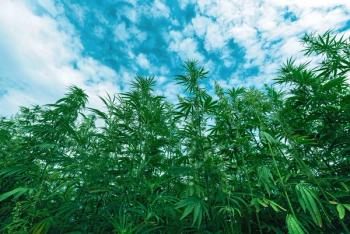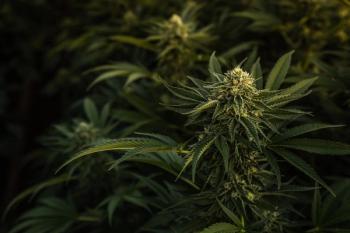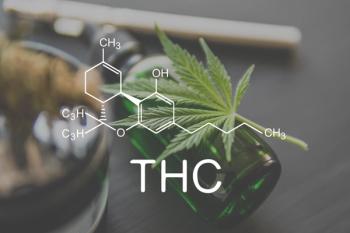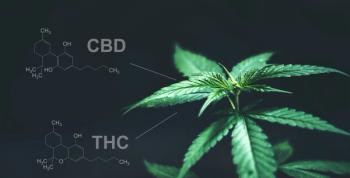
Cannabis Science and Technology
- March 2023
- Volume 6
- Issue 2
- Pages: 22-25
Targeting Consistent THC Levels in Sustainable Manufacturing and Processing

This installment discusses new methods of cannabis production and manufacturers' reactions to the rise of the demand for cannabis artisan extracted products.
As the recreational cannabis market matures, and the medical market relies on precise dosage, there are some surprising new ideas in processing and sustainability being explored. This installment will discuss new methods of cannabis oil production, and manufacturers' reaction to the rise of the demand for cannabis artisan extracted products. We’ll also take a look at how new gene technologies are allowing growers to enhance the THC content in their plants even to the point of a specific THC target level. Finally, we’ll talk about safety as an ongoing issue in cannabis manufacturing.
When the cannabis industry first began selling recreational adult products in Denver, Colorado in 2014, there was a rush to get the highest-level tetrahydrocannabinol (THC) products. In fact, according to an article in Frontiers in Psychiatry (1), in some states the legalization of cannabis for adult and medical use has increased the availability and sales of cannabis products, such as extracts, that have a THC content greater than 70%.
The cannabis industry has resisted proposals to cap THC content by arguing that people who use high potency cannabis extracts reduce their THC dosage to achieve the same desired psychoactive effects. They may, for example, reduce the amount smoked when using high THC products. They may also inhale smaller puffs or do so less often when using higher potency products. The Frontiers in Psychiatry (1) article concluded that there is an “urgent need for larger and better controlled experimental and observational studies of the extent to which cannabis users can and do titrate their THC doses when using more potent cannabis products, such as cannabis extracts and high potency cannabis flower. This research is needed to inform policymakers on how to reduce harms from the use of high potency cannabis products. It may indicate the need for caps on the potency of cannabis products or higher taxes on more potent cannabis products to discourage their heavy use. It is also needed to inform the labeling of THC doses in legal cannabis products that may include standardized THC doses analogous to standard units of alcohol.”
Indeed, medical cannabis regulators in states such as Vermont, Texas, and Florida—among others—have discussed or implemented THC caps for medical cannabis (2-4). This installment discusses manufacturers reaction to the rise of the demand for new types of cannabis artisan products with varying strengths of THC, and other “designer” cannabis that the consumer wants. We’ll also look at how new gene technologies are allowing growers to enhance the THC content in their plants—even to the point of a specific THC target level. Finally, we’ll talk about safety as an ongoing issue in cannabis manufacturing, with a note from the Sustainable Cannabis Coalition (SCC) and a quick mention of new fire safety standards being developed by the National Fire Protection Association (NFPA) for oil extraction facilities.
Diving Into the Gene Pool
One of the new ways to help determine THC levels in a cannabis plant is through genetic engineering. It’s being used now to study and try to control the THC levels of hemp, which has a tendency to “go hot” after being planted, meaning that the 0.3% THC required for it to be considered legal hemp (5) actually rises, and becomes more concentrated, due to various soil and climate conditions.
When that happens, it becomes an illegal cannabis plant. A hemp farmer could have his whole crop burned if even part of it was discovered to have a greater percentage of THC than is allowed by law.
Enter GT Research (GTR [6]).
Samuel Proctor, CEO of GT Research, which is a plant genetics research organization made up of geneticists, computer scientists, and bioinformatic specialists, said their focus has been on building the best platform or computational analysis of the genome and the epigenome of a plant organism, and leveraging that understanding in terms of bio-engineering.
“Understanding the genome is fundamental, although there's plenty of progress being made,” he said. “For cannabis, there is far less understanding of its genome than compared to crop things like corn or soy—crops that have been industrialized and heavily studied and modified by industry for decades. So, we are very much building for the present and future.”
He said that GTR is agnostic in the sense that they don’t try and make the plant do this or that. “We deploy our technology on behalf of partners and customers,” he explained. “So, we really just let them say what they need, and then use our expertise and capabilities to see if we can deliver that.”
“It was clear to us from the beginning that the there was a commercial need for a hemp line where one could be assured of the level of Delta 9 output, and that's what GTR has been working on for almost two years,” Proctor said. “We've achieved a number of milestones in terms of demonstrating our ability to use the technology. It is patented. And we can share that patent. It's publicly available if you want to take a look at it. We're very optimistic that this cultivar will be in the market sometime this calendar year. We're deploying the technology in partnership with producers, so those producers will bring to market this cultivar, which essentially will have been created using our technology.” He added he doesn’t know what the resulting cultivar will be called.
Could GTR then essentially design a certain type of cannabis plant for a different niche market? “The way we think about it is a series of sub or niche markets in terms of the plants,” Proctor said. “One market certainly is the legal cannabis US retail consumer market. The demand point is clearly related to Delta 9 output. But there is a whole set of markets for particular, rare cannabinoids. We're all about focusing on the place where there's the best overlap of the Venn diagram (7) in terms of commercial need, and the ability to deploy our technology to achieve those needs.”
The way their process generally works is by starting with what someone wants to achieve and working backwards, Proctor explained. “We started with the problem, which is: What causes the levels of Delta 9 to fluctuate, and why is it never zero? The answer is, as we discovered when we looked, that there is a multiplicity of copies of the THC gene,” he said. “So any dilution of that has to deal with the fact that there are multiplicity of copies. They turn themselves off and on. Our core competency lies in understanding what the genetic and epigenetic mechanisms are underlying the phenotypic outcome. And then identifying and using the right computational and bio-engineering tools to deal with whatever mechanisms are identified.”
OK, so GTR has found a way to measure and manipulate THC. But is there anything else that can be done with this technology? “We think the sky's the limit,” Proctor said. “It's an amazing plant, with just a whole universe of compounds and effects which we are still at the beginning of understanding. So, it's clear that minor cannabinoids are in demand, and that modulation or enhancement of them could be an attractive outcome. But there's plenty of cannabinoids that we haven't yet really characterized and don't really understand what they do.
“We're generally of the view that, over time, we will go in the direction that other agricultural commodities have. Science will continue to develop its understanding of the genome. Through a number of means, both in terms of modifying the plant and through synthetic biology, we will create a host of products that key off of the plant and what it produces,” said Proctor.
Some of those products could be the higher end, and sometimes higher THC, cannabis artisan products—a growing niche market today (8).
Proctor said that the computational tools that are available to analyze the genome of any living thing continue to advance, and are very powerful. “We think that everyone should be doing whole genome sequencing of their cultivars to gain a core genomic understanding of their plants,” he said. “That has nothing to do with genetic modified organisms (GMOs [9]). That's just computing.”
GTR offers a general overview of a cultivar for $3000 that includes whole genome sequencing. The sequencing technology will continue to improve. It also depends on what someone wants to look at. “At a base case, doing whole genome sequencing and analyzing key pathways, that's important,” Proctor said. “But a particular grower might say, ‘Is this cultivar favorable or unfavorable for increasing THC yields,’ just as an example. So, those are the types of questions that the computational platform is necessary to answer, and we definitely have the ability to deliver answers to those questions to growers in a very cost-effective manner.”
A Better Dosage Control for the Consumer
As GTR and other companies are exploring ways of controlling THC in the laboratory, the product development side of the industry keeps churning out new ways of consuming cannabis products, some that are beginning to look more like pharmaceuticals with controlled dosage, which helps broaden their appeal.
“Smoking is not exactly an accepted way of consuming cannabis across all of consumers,” said Robert Sedlock, vice president of Natoli Scientific (10), a tablet compression tooling and development company. “Because you have older people that don't want to smoke. So, with tablets, it's a consistent dosage form. Tablets have been around for over a century and it's an accepted process in the medicine world and in the dietary supplements world. So, moving the cannabis industry into a dosage form like tablets is definitely the future in my mind because now you've got an exact dosage form.”
Natoli is based in a 14,000-square-foot facility in Telford, Pennsylvania with four PhD scientists, mechanical engineers, and technicians. The company provides services to the pharma, dietary supplements, cannabis industry, and food industry.
A 2021 article in Cannabis Science and Technology (11) identified tablets as being the largest group of delivery systems for the pharmaceutical and dietary supplement industries. This technology offers an opportunity to the cannabis industry to allow orally administering of a consistent and defined amount of cannabidiol (CBD) or THC.
Sedlock doesn’t have a Schedule 1 Drug Enforcement Administration (DEA) license to work with Delta-9 THC product directly (his partner grows both hemp and Delta-9 cannabis), so he works with CBD distillate.
“You as a customer might have a THC product, but your CBD distillate is the same consistency, the same kind of viscosity as your THC,” he said. “So, I’ll develop (a tablet operation) using CBD and then I’ll send it to them and they’ll approve it. Then you tell them ‘OK when you guys manufacture, don’t use CBD, use your THC.’ It’s the same thing.”
Natoli follows pharmaceutical practices and regulations in developing their tablets. “So, they're proven safe and compliant procedures,” Sedlock said. “It’s the wild, wild west right now in terms of cannabis regulations in various states, so eventually the FDA [Food and Drug Administration] is going to come in and make some rules. You better hope that you're following the procedures of the pharma process.”
Sustainability and Safety Attainability
Most sustainability issues deal with water and electricity, and what to do with the waste from processed cannabis, in a broad process that includes managing safety issues as well.
But there is new light being shed on what to do with the actual product packaging, which is generally made of hard plastic, and difficult to open, because industry regulators appear to be erring on the side of overdoing it with their recommendations for packaging safety.
For example, due to regulated safety requirements, the type of packaging used in cannabis often weighs four to 30 times their contents. A single gram of cannabis has been found to be packaged in 70 g of plastic packaging (12).
Trulieve, and their program, TruRecycle, based in Florida (13), has reportedly recycled more than 3500 lbs of cannabis packaging waste since October 2021. Their program allows patients to return select container types to any Trulieve dispensary location in the state, so long as they are clean, free of labels, and clear of residue. Patients return packages in-store and they remain in zero waste boxes that are shipped with a UPS carbon neutral shipping partner to their recycling partner.
Shawn Cooney (14), founder and CEO of Cloud Farming (15), and a spokesperson for the Sustainable Cannabis Coalition (SCC), sees the problems with packaging in the industry. “Yeah, you got that one wired,” he said, referring to the problem of hard plastic packaging of recreational cannabis products. “Part of it is legislation, and the regulators saying you have to do it (package) a certain way, whether you agree with them or not. Everyone has to sort of go along with that.”
One company Cooney talked to is getting a lot of plastic coming back now, but they've had to ask their customers to do that. “They still don't have a really great way of disposing it. So, they put it in to some kind of chopping system to do something with it. That’s not the best way to get rid of it,” he said.
“There are no industry facts and figures about getting rid of or recycling plastic packaging,” Cooney said. But there is work under way.
The SCC is working with the American Society of Testing and Measurement (ASTM) and the ASTM’s cannabis group, Committee D37 (16). So far, that committee has published more than 40 standards and has 100-plus currently in development (16). There are 16 subcommittees (17) under the D37 committee, addressing standards issues of sustainability, processing and handling, laboratory, quality management, and others.
There's also a packaging group and a labeling group. Cooney and his wife, Jennifer, are the chair and vice chair of the cannabis sustainability group at the ASTM. “We've got 110 folks just focused on sustainability, working on what to do with the cannabis waste stream,” he said. “We are starting a whole standards thing. We will have some standards that legislators can share with regulators.”
“What the ASTM is trying to come up with is a consensus on industry standards that can convince legislators and regulators who can look at that and say, ‘Okay, this is what the experts have agreed on, maybe we should start moving in that direction.’ As opposed to looking at each other and pointing fingers, or relying on anecdotal stories,” Cooney said. “That's what we're really pushing for, is to start the standards process on that from a sustainability side.”
He also shared that the SCC is focusing on greenhouse gas emissions in the cannabis production, or what's called Scope 3 emissions, which is really never talked about. Scope 3 emissions are the result of activities from assets not owned or controlled by the reporting organization, but that the organization indirectly affects in its value chain, according to the Environmental Protection Agency (EPA) (18). “And that's the hardest to account for,” Cooney said. “But generally, it's basically 70% of the company's greenhouse gas emissions.”
Measuring greenhouse gases is on the short list of what cannabis producers and packagers need to understand better for an overall safer operation.
Other safety standards are still being explored by The National Fire Protection Association (NFPA), which is developing new cannabis fire protection standards, hoping to expand on the NFPA1 fire code, which addresses fire protection and energy efficiency concerns within growing and processing facilities.
NFPA1 (19) only addresses concerns, it doesn’t set in stone specific regulations. New standards will address the protection of those facilities and set education, inspecting, testing, and maintenance requirements in part to reduce excess energy consumption. (Extraction operations are already semi-well regulated, according to U.S. Chemical Storage [20], because of well-established rules regarding hazardous flammable chemicals such as butane, hexane, and ethanol; and hazardous gases, such as carbon dioxide.)
Conclusion
Controlling the entire production and packaging process better is top of the agenda for any cannabis production operation. That means from the micro-level—the genetics of the plant—to the macro level—the machinery and environment inside the production facility. Everything must work in sync to get the most efficiency—both out of the plant and the production process using the plant.
In terms of energy and sustainability, there are some hidden electricity greenhouse gas generators that not everyone takes into consideration beyond just the energy costs of growing the plant. “If a cannabis producer is running a kitchen, he’s got a lot of heavy equipment. You've got chillers, compressors, ovens, vacuum pumps, and on and on and on,” said Cooney. “So, they're in a real similar position to a grow operation. They may not be quite as big, but the energy intensity for that piece of the business is really high.”
Cooney added that SCC is pushing the industry to all get on the same page when it comes to the broader picture of sustainability. “Every cultivator has its own sustainability problem—indoor, greenhouse, or outdoors. They've got something to talk about. And it’s time to start measuring and fixing it,” he said.
References
https://www.frontiersin.org/articles/10.3389/fpsyt.2021.630602/full#B1 https://ccb.vermont.gov/response-15-thc-cap-recommendation https://texasoriginal.com/2021/05/19/the-texas-medical-marijuana-thc-cap-explained/ https://norml.org/florida-oppose-arbitrary-thc-caps/ https://www.cdc.gov/marijuana/featured-topics/CBD.html https://www.gtresearch.io/ourteam.html https://www.lucidchart.com/pages/tutorial/venn-diagram https://www.farmhouse.delivery/collections/cannabis-goods https://www.nature.com/scitable/topicpage/genetically-modified-organisms-gmos-transgenic-crops-and-732/ https://natoli.com/services/natoli-scientific/ https://www.cannabissciencetech.com/view/cannabis-and-hemp-tableting-challenges https://www.cbc.ca/news/canada/new-brunswick/cannabis-packaging-excess-1.4870682 https://www.trulieve.com/discover/blog/trulieves-cannabis-packaging-recycling-program-trurecycle https://www.sustainablecannabiscoalition.com/spokespersons https://www.cloudfarming.net/about https://www.astmcannabis.org/cannabis-standards-and-publications/ https://www.astm.org/get-involved/technical-committees/committee-d37/subcommittee-d37 https://www.epa.gov/climateleadership/scope-3-inventory-guidance https://www.nfpa.org/codes-and-standards/all-codes-and-standards/list-of-codes-and-standards/detail?code=1 https://www.uschemicalstorage.com/safe-hazmat-storage-compliance-in-the-growing-cannabis-extraction-industry/
About the Columnist
David Hodes has written for many cannabis publications, and organized or moderated sessions at national and international cannabis trade shows. He was voted the 2018 Journalist of the Year by Americans for Safe Access, the world’s largest medical cannabis advocacy organization.
How to Cite this Article:
Hodes, D., Targeting Consistent THC Levels in Sustainable Manufacturing and Processing, Cannabis Science and Technology, 2023, 6(2), 22-25.
Articles in this issue
almost 3 years ago
The Transformation of Cannabis Terpenes from Harvest to Shelfalmost 3 years ago
Cannabis Extraction Facility Setup 101Newsletter
Unlock the latest breakthroughs in cannabis science—subscribe now to get expert insights, research, and industry updates delivered to your inbox.




